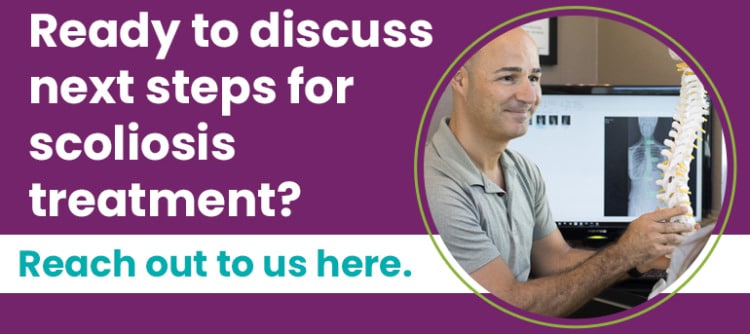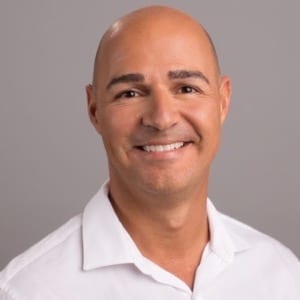What Is the Newest Treatment for Scoliosis? Latest Options
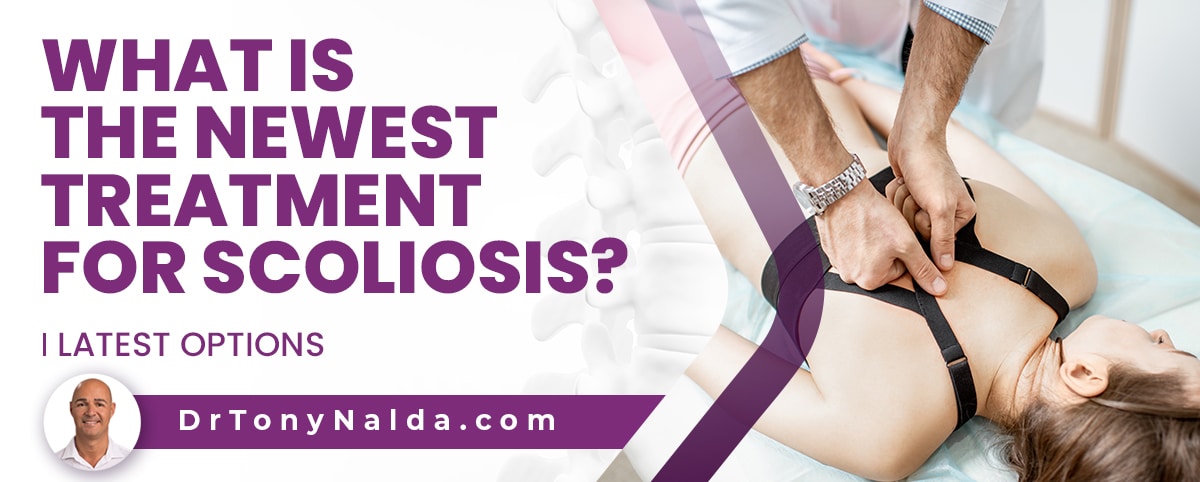
Scoliosis is a structural spinal condition that's been around since ancient times, and while we still don't fully understand what triggers its initial development in most cases, we've learned a lot about how it progresses, and how to treat it effectively over the years.
The latest options in scoliosis treatment are innovative and integrative. Traditional treatment can funnel patients towards invasive surgical intervention, but modern conservative treatment options include chiropractic care, physical therapy, scoliosis exercises, corrective bracing, and rehabilitation.
Following a scoliosis diagnosis, the most important decision to be made is how to treat it moving forward; treatment choice will shape the spine's long-term health.
Table of Contents
What is Scoliosis?
Scoliosis is a highly prevalent spinal condition that causes a loss of the spine's healthy curves and alignment.
The spine is naturally curved at each of its main sections (cervical spine, thoracic spine, and the lumbar spine), and these curves make the spine stronger, more flexible, and better able to handle mechanical stress incurred during movement.
Scoliosis causes an unhealthy sideways-bending spinal curve to develop, and as a 3-dimensional condition, scoliosis also causes the spine to twist unnaturally.
Scoliosis is progressive; its nature is to get worse over time.
In most cases of scoliosis, we don't fully understand what triggers its development, but we know it's growth that makes it progress, and progressing involves the size of the unnatural spinal curve increasing as the condition becomes more severe.
No Two Cases of Scoliosis are the Same
The complex nature of scoliosis necessitates the complete customization of effective treatment plans.
There are different severity levels of scoliosis from mild and moderate scoliosis to severe and very severe scoliosis.
There are also different types of scoliosis: idiopathic scoliosis, neuromuscular scoliosis, degenerative scoliosis, and congenital scoliosis.
Condition type is determined by causation. There is no known cause for idiopathic scoliosis, and approximately 80 percent of known cases are classified as idiopathic; the remaining 20 percent are associated with known causes and include neuromuscular, degenerative, and congenital scoliosis.
Neuromuscular scoliosis is caused by the presence of a larger neuromuscular condition like spina bifida, muscular dystrophy, and cerebral palsy.
Degenerative scoliosis is caused by natural age-related spinal degeneration, and congenital scoliosis is caused by a malformed spine that develops in utero, so babies are born with the condition.
Scoliosis can affect all ages from congenital scoliosis in babies, infantile scoliosis, early onset scoliosis in juveniles, and adolescent idiopathic scoliosis is the most prevalent type overall. Adolescent scoliosis is diagnosed between the ages of 10 and reaching skeletal maturity.
Adult scoliosis is diagnosed once skeletal maturity has been reached.
With so many variances within the condition, no two cases are the same, which is why treatment plans have to be fully customized.
Scoliosis Treatment Options
When it comes to scoliosis treatment, this is an important topic because there are different ways to address scoliosis, and each shapes the spine';s long-term health, strength, and function differently; patients need to understand the differences.
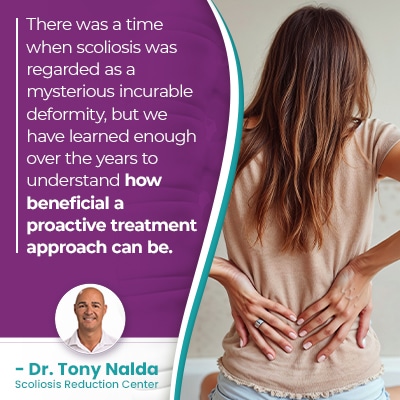 There was a time when scoliosis was regarded as a mysterious incurable deformity, but we have learned enough over the years to understand how beneficial a proactive treatment approach can be.
There was a time when scoliosis was regarded as a mysterious incurable deformity, but we have learned enough over the years to understand how beneficial a proactive treatment approach can be.
Because scoliosis is progressive, treatment is about managing an ongoing condition for the best quality of life.
Traditional Surgical Scoliosis Treatment
The dominant treatment choice for many years was traditional scoliosis treatment that is characterized by watching and waiting and spinal fusion surgery.
Traditional scoliosis treatment is more reactive than proactive; it commonly recommends merely watching and waiting for signs of continued progression while mild, but this is wasting valuable treatment time; scoliosis is the simplest to treat and most responsive while mild.
As a progressive condition, scoliosis is virtually guaranteed to get worse over time and with growth, so why not start treatment when curves are at their smallest, mildest, most flexible and responsive.
Traditional treatment doesn't have a strategy for addressing scoliosis while mild, which is why it commonly funnels patients towards scoliosis surgery planned when/if patients cross the surgical threshold by progressing into a severe curve.
Scoliosis Surgery
Spinal fusion is commonly recommended if traditional bracing has been unsuccessful, when conditions are severe with Cobb angle measurements of 40+ degrees, and there are signs of continued progression.
While there are different types of spinal fusion such as vertebral body tethering that's considered a minimally invasive surgery.
Spinal fusion involves determining the curve's most-tilted vertebrae and fusing them into one solid bone; this is done to eliminate movement (progression).
In most cases, metal rods are attached to the spine with pedicle screws to hold it in place, but this is contrary to the spine's movement-based design so can come with some serious potential side effects.
While surgical patient outcomes will vary based on a number of factors such as patient age, condition types, severity, curvature location, and the number of vertebrae fused, many patients experience a noticeable loss in spinal flexibility and range of motion.
Increased pain at the fusion site can also be a side effect, and as a fused spine is fused for life, it's weaker and more vulnerable to injury.
The reality is that not all cases of scoliosis require surgery, and this is where modern conservative scoliosis treatment comes in.
Modern Conservative Scoliosis Treatment Options
Modern conservative scoliosis treatment is integrative, so patients benefit from accessing multiple scoliosis-specific forms of treatment under one roof.
Here at the Scoliosis Reduction Center®, treatment plans are proactive and initiated immediately following a diagnosis as this is when conditions are at their mildest and most responsive.
As a progressive condition that's triggered by growth, childhood scoliosis should always be taken seriously, and proactive treatment needs to be applied to counteract the condition's progressive nature.
Scoliosis Progression
As scoliosis progresses, the unnatural curve size increases, as do its effects, and the spine gets increasingly rigid, making it less responsive to treatment.
Scoliosis symptoms will become more severe alongside progression, and the two main symptoms are postural changes and pain.
For children, rapid progression is a risk due to the constant trigger of growth occurring, but childhood scoliosis also isn't compressive, and it's compression that causes the majority of condition-related pain.
So for skeletally immature patients, rapid progression is a risk, and while there are no treatment guarantees, scoliosis correction is more likely with early detection and intervention.
Compression of the spine and its surrounding muscles and nerves can cause back pain, muscle pain and imbalance, and nerve pain caused by nerve compression.
Scoliosis treatments that are proactive are applied early in the condition's progressive line with the goal of preventing progression, increasing effects, and the need for surgical treatment in the future.
Modern Scoliosis Treatment Disciplines
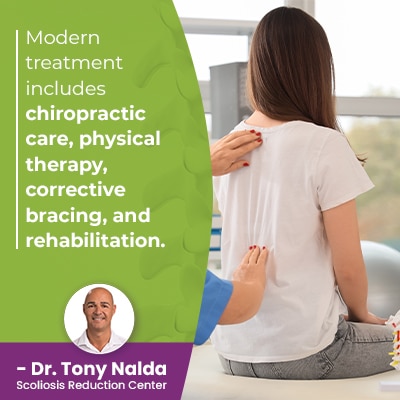 Modern treatment includes chiropractic care, physical therapy, corrective bracing, and rehabilitation. These treatment disciplines are combined to impact conditions on every level, from a curvature reduction to core and back muscle strengthening for more spinal support.
Modern treatment includes chiropractic care, physical therapy, corrective bracing, and rehabilitation. These treatment disciplines are combined to impact conditions on every level, from a curvature reduction to core and back muscle strengthening for more spinal support.
Condition-specific chiropractic care can involve a number of techniques for realigning the spine by adjusting the curve's most unnaturally-tilted vertebrae back into alignment with the rest of the spine; as a structural spinal deformity, scoliosis has to be primarily impacted on a structural level.
Physical therapy and scoliosis exercises can be applied to strengthen the spine's surrounding muscles, improve muscle balance and posture; this means more support and stability for the spine.
When an unnatural spinal curve develops and is progressive, it needs to be treated proactively.
With the Scoliosis Research Society estimating close to seven million people currently living in the United States alone, awareness is needed, and as a progressive condition triggered by growth, childhood scoliosis should always be taken seriously.
Conclusion
A scoliosis curve means an unnatural lateral curvature of the spine has developed, and scoliosis patients need to understand that there are significant differences between traditional and modern conservative scoliosis treatment.
Traditional scoliosis treatment options aren't applied until a significant amount of progression has already occurred, and when/if patients become severe or very severe, spinal fusion surgery is commonly recommended.
Surgical treatment options for scoliosis include different types of spinal fusion surgery such as anterior vertebral body tethering that involves adjustable tethers to account for adjusting tension on the spine during growth.
Spine surgery is invasive and risky, while conservative treatment is aligned with the spine's natural movement-based design and works towards preserving as much of the spine's natural strength and function as possible.
A spinal curvature that's progressive is one that will get larger over time; only proactive treatment can work towards counteracting its progressive nature.
An unnaturally curved spine has to be addressed proactively before it gets worse and causes more severe symptoms and disruptions to movement.
Dr. Tony Nalda
DOCTOR OF CHIROPRACTIC
After receiving an undergraduate degree in psychology and his Doctorate of Chiropractic from Life University, Dr. Nalda settled in Celebration, Florida and proceeded to build one of Central Florida’s most successful chiropractic clinics.
His experience with patients suffering from scoliosis, and the confusion and frustration they faced, led him to seek a specialty in scoliosis care. In 2006 he completed his Intensive Care Certification from CLEAR Institute, a leading scoliosis educational and certification center.
About Dr. Tony Nalda
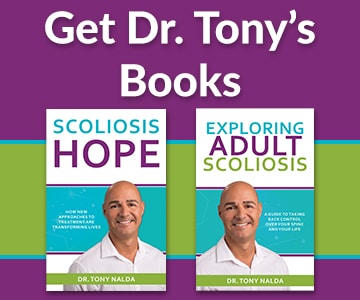 Ready to explore scoliosis treatment? Contact Us Now
Ready to explore scoliosis treatment? Contact Us Now